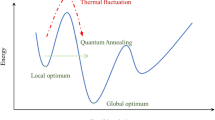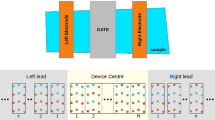Abstract
Straightforward application of numerical modelling approaches to Photonic Band-Gap structures demands the use of fine meshes, notably finer that the size of a single scattering element, in order that high accuracy is achieved. However simulations employing sufficiently fine meshing to correctly represent the geometry of the scatterers lead to very long computational run-times and huge memory consumption. Such direct numerical approaches to PBG characterisation are only suited to the analysis of single unit cells or for benchmarking. In practice, the computational overheads significantly increase when one deals with an array of cells or when modelling the global behaviour of a large number of devices integrated on a single substrate. Therefore in order to model the macroscopic response of PBG structures the possibility of employing meshes of much larger size than the individual scattering elements has been explored. A suitable approach, initially developed for Electromagnetic Compatibility predictions, has been modified to permit modelling of Photonic Crystal Waveguides. The method provides second order accuracy and leaves a designer with the flexibility to discretise the entire problem space with an arbitrary number of scatterers per mesh cell. Results are first presented for small clusters of scatterers and subsequently for complete photonic structures.
Similar content being viewed by others
References
C. Christopoulos (1995) The Transmission-Line Modeling Method: TLM IEEE Press Piscataway, NJ
Biwojno, K., P. Sewell, Y. Liu and C. Christopoulos. EUROEM’04, Magdburg, Germany, 173-174, 2004.
I.S Gradshteyn I.M. Ryzhik A. Jeffrey (Eds) (1993) Table of Integrals, Series, and Products Academic Press San Diego, CA
Johns, P.B. IEEE Trans Microwave Theory Tech, Vol. MTT-35, No. 4, 370–377, Apr. 1987.
S.G. Johnson D.J. Joannopoulos (2002) Photonic Crystals: The Road from Theory to Practice Kulwer Academic Norwel, Massachusetts
R. Stoffer H.J.W.M. Hoekstra R.M. Ridder ParticleDe E. Groesen ParticleVan F.P.H. Beckum ParticleVan (2000) Opt Quant Electronics. 32 947
Author information
Authors and Affiliations
Corresponding author
Rights and permissions
About this article
Cite this article
Biwojno, K., Sewell, P., Liu, Y. et al. Electromagnetic Modelling of Fine Features in Photonic Applications. Opt Quant Electron 38, 187–201 (2006). https://doi.org/10.1007/s11082-006-0003-z
Received:
Accepted:
Issue Date:
DOI: https://doi.org/10.1007/s11082-006-0003-z




